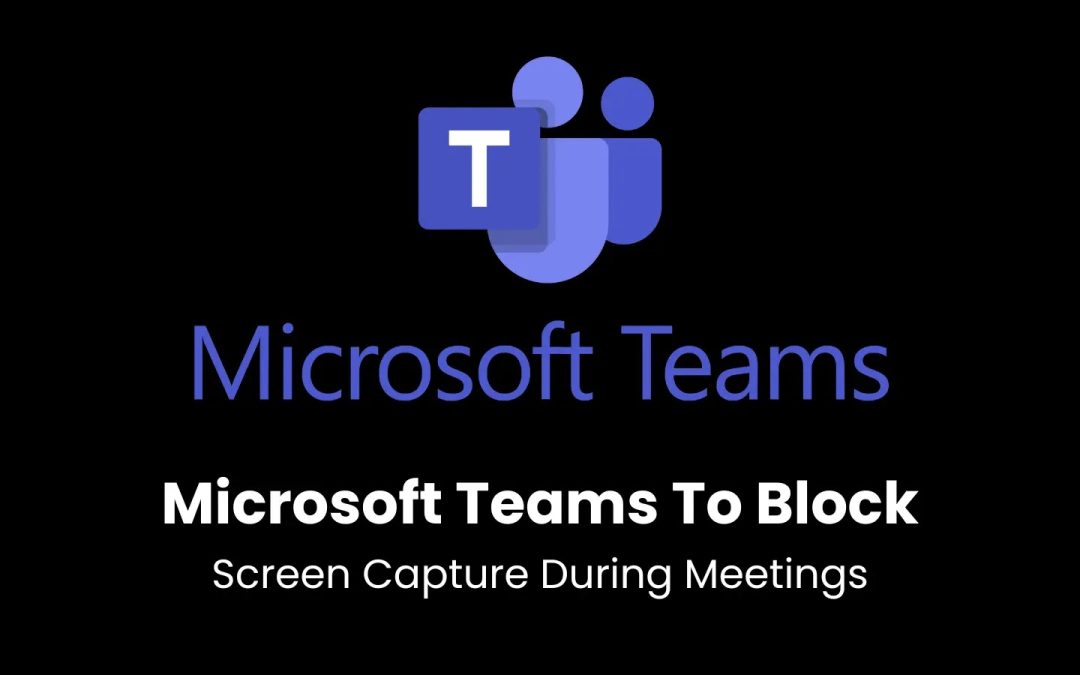“`html
Microsoft has unveiled a novel “Prevent Screen Capture” functionality for Teams, which will obstruct unauthorized screenshots during meetings.
Anticipated for global deployment in July 2025, this capability signifies Microsoft’s ongoing commitment to enterprise security and compliance with regulations as sensitive data is increasingly exchanged during virtual meetings.
This new screen capture restriction directly confronts one of the most recurrent vulnerabilities in virtual conversations: the ability of participants to swiftly screenshot or record sensitive shared content.
Safeguarding Sensitive Information
Upon activation, any effort to capture a screen during a secured meeting will lead to the meeting display becoming entirely black, making any screenshots ineffective except for system alerts.
“This design proactively restricts the exposure of sensitive shared media to platforms without the technical ability to block screen captures, reducing a significant threat vector while still permitting these users to engage in meeting discussions,” as stated in Microsoft’s official announcement.
This feature will be accessible across various platforms, including Teams desktop applications for both Windows and Mac, as well as mobile applications for iOS and Android. For participants joining from unsupported platforms or older software versions, Microsoft will automatically direct them into audio-only mode to ensure meeting security.
Enhanced Audit Features for IT Administrators
In addition to this security upgrade, Microsoft is also rolling out detailed audit logs for screen sharing and control functionalities. Expected to be generally available in June 2025, this capability will furnish IT administrators with extensive logging data accessible via the Teams Admin Center.
“IT administrators will now possess the ability to access detailed logs for both ‘Give and Take Control’ and ‘Screenshare’ functionalities,” states the Microsoft 365 Roadmap update.
These logs will document who initiated or accepted control during screen sharing sessions, alongside corresponding timestamps and user identities.
This enhancement addresses requests from administrators for increased visibility into screen sharing activities, especially in organizations with stringent compliance mandates or those overseeing sensitive intellectual property.
The new functionalities align with Microsoft’s dual emphasis on maximizing productivity while mitigating security risks. As regulatory demands tighten and data breaches rise, organizations can no longer depend solely on user trust to manage the flow of sensitive information.
Nevertheless, experts point out certain limitations. The technology cannot eliminate all hazards, such as physical photography of screens, and companies should weave these features into broader security strategies rather than viewing them as all-encompassing solutions.
Microsoft Teams, boasting over 320 million monthly active users across 181 nations, has evolved into a vital platform for business operations, knowledge exchange, and decision-making.
These new security enhancements echo increasing enterprise concerns regarding data leaks, corporate espionage, and unintentional disclosure of confidential information in virtual settings.
For organizations functioning in compliance-heavy industries or across multiple regulatory landscapes, these advancements offer valuable tools to safeguard sensitive conversations and intellectual property while preserving the collaborative advantages that have established Teams as essential in modern work.
“`


.png%0D%0A)